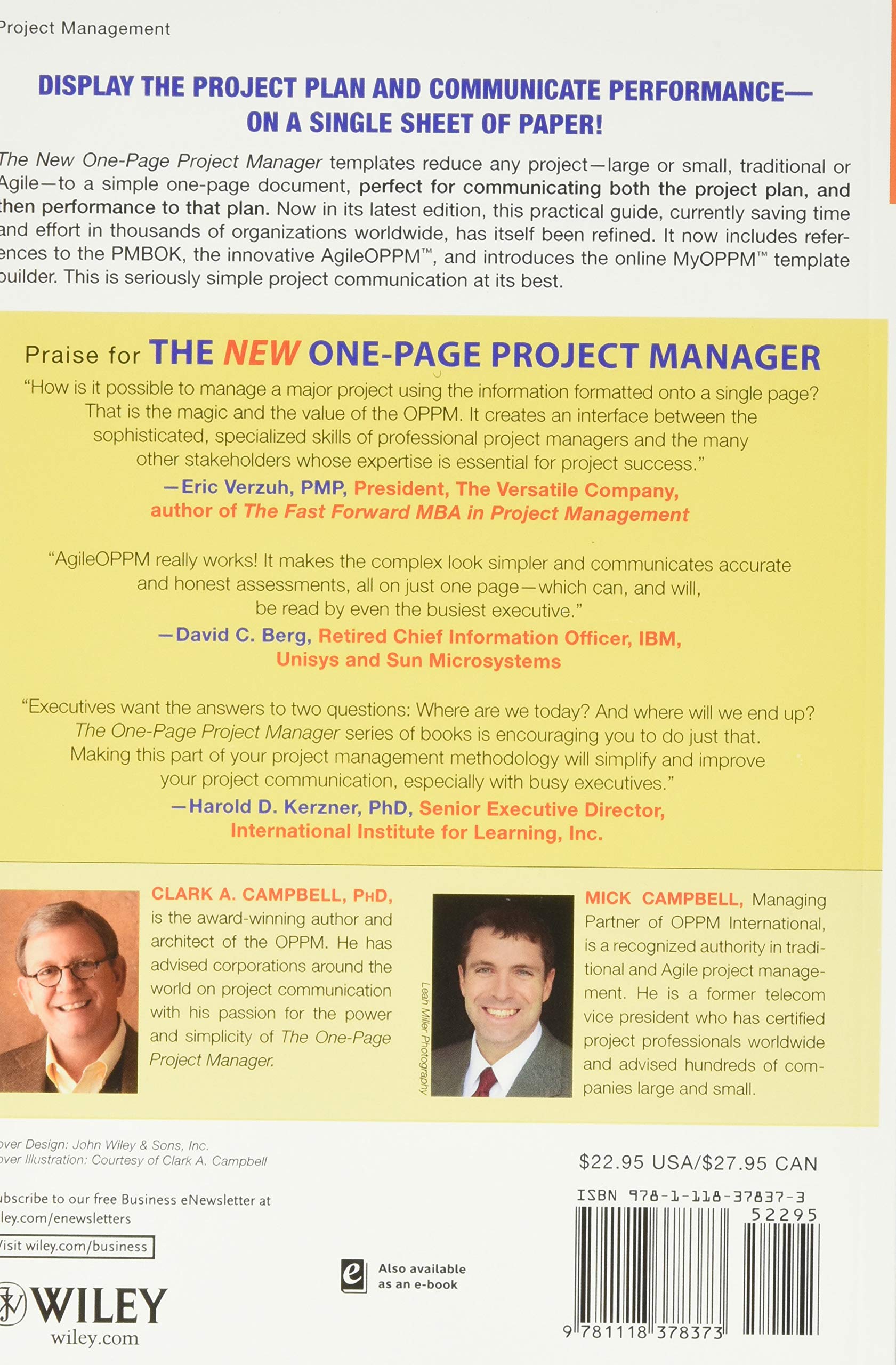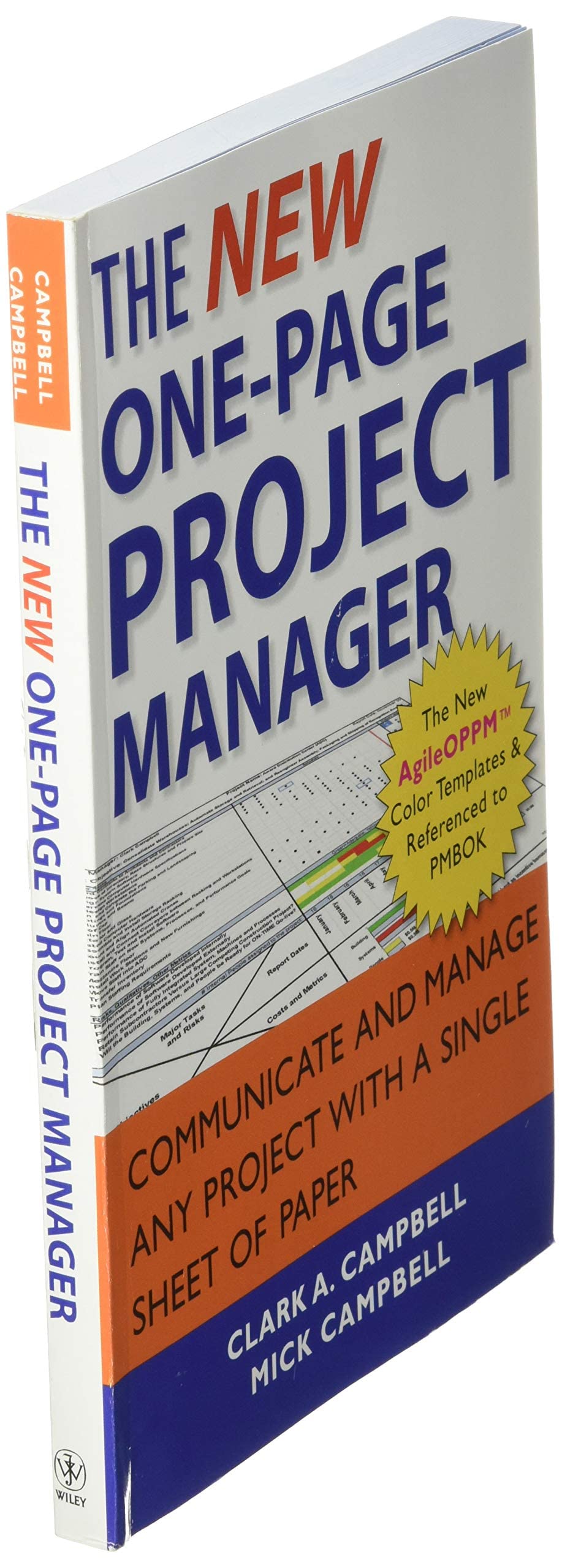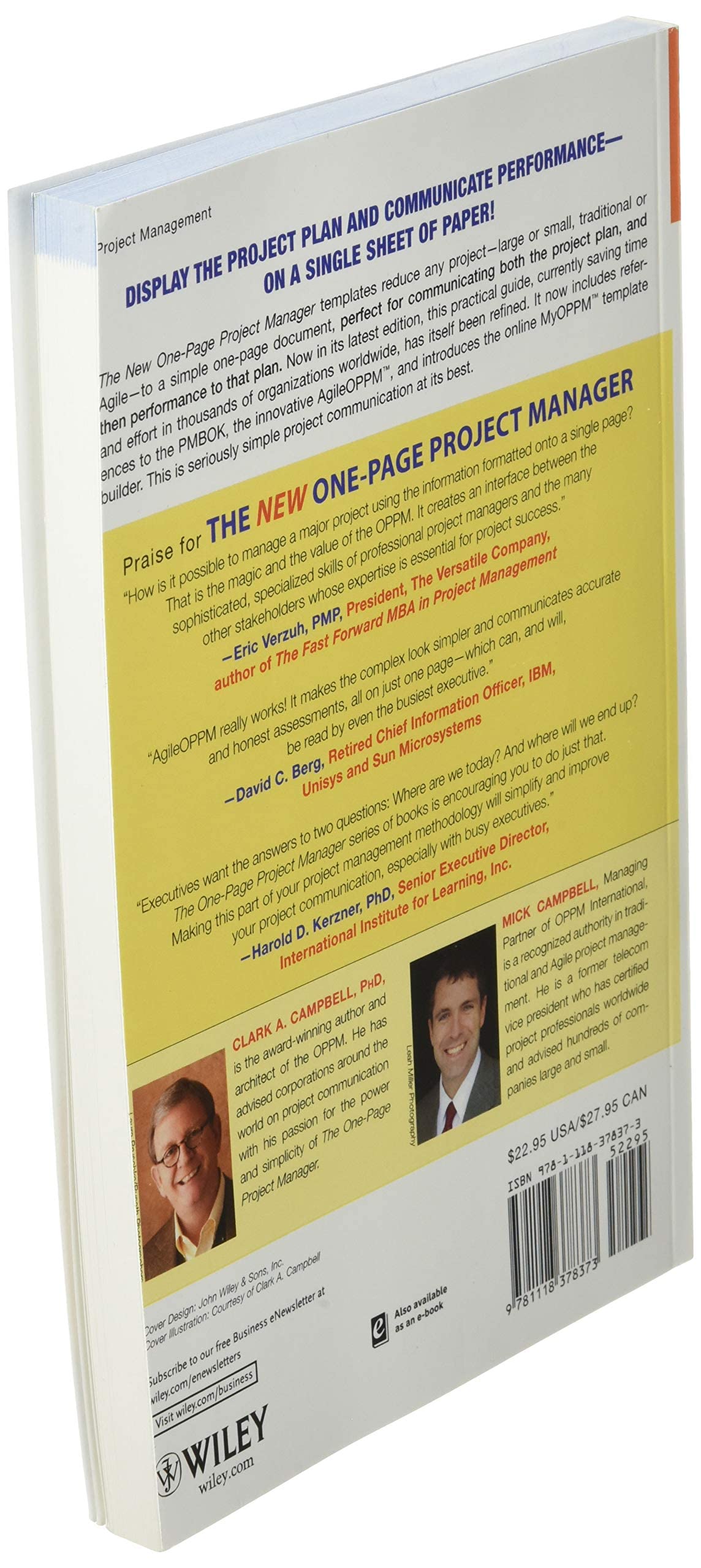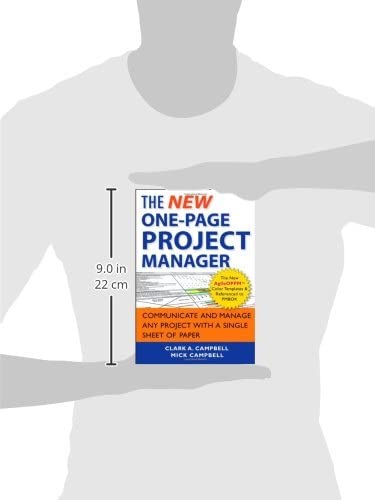Customer Services
Copyright © 2025 Desertcart Holdings Limited
Desert Online General Trading LLC
Dubai, United Arab Emirates






Full description not available
S**S
Happy To Spend Time with Such a Practical & Useful Book!
I am the CEO of a small, yet rapidly growing business. I have no background in project management and needed something to help me train a few employees on how to organize projects and initiatives. This perfectly solved my needs!I am a firm believer in The 80/20 Principle: The Secret to Achieving More with Less and this book is an excellent example of 80/20 in practice. It's a great primer on project management, covering the most essential elements of project planning and collaboration. Through the process of assembling this visual display of data, my small team can quickly pick up the most essential 80% of effective project management.And of course, as the title suggests, it lays out the process for effectively coordinating all elements of a project on ONE page! Those elements include: objectives, sub-objectives, tasks, timeline, risks, accountability of team members, accountability metrics (including budget), qualitative notes, forecast, and summary.Content I Found Particularly Helpful:- Most essential communication tips for collaboration (p 3 & 4).- "How to" chapters are: Chpt 4, 5, & 6.- Agile project management is covered in chapters 7, 8, 9. (This book assumes some prior understanding of agile PM. I am completely unfamiliar with the difference between "regular" and "agile" and struggled to fully comprehend the difference from this book. With that said, I followed the content of these chapters just fine.)- Chapter 10 = "How to Think About Projects." This will be helpful for training novice project managers and is probably a good refresher of fundamentals for experienced PMs.- Chapter 12 = "Consulting and Marketing with OPPM." This chapter explores how the OPPM can be used to make proposals and communicate with clients effectively. I am very jazzed about this concept!- BONUS: Training videos and templates available at the book's website.Having worked in the corporate and entrepreneurial world, I can't imagine an organization that would not benefit from the OPPM. Non-profit organizations, too!Glad to have spent time with a book that is so informative and will prove to be very useful...tomorrow!
J**.
Brilliant, with a key deficiency.
As introduction, I am a practicing PMP certified project manager. I use this system.The brilliant part is this book lays out a very simple matrix for tracking and reporting key project deliverables, identifying responsible parties, and reporting progress to higher management in a compact, executive-friendly format. After I read this book, I adopted the methodology because it saves me that most valuable resource -- time.The Excel templates are available for an additional fee, but I'm too damn cheap to buy them and good enough with Excel to make my own templates. I also created tabs for an action item list, a risk register, an issues list, a requirements list, a contact list,... you get the idea. These weren't even mentioned in the book. What I ended up with is a project notebook that is a one-stop-shop for everything but the meeting minutes. The system outlined in the book is good, but incomplete.The other key deficiency I learned to deal with is that every place I've been insists on a plan either in MS Project or Clarity/Open Workbench. Most places also have specific reporting requirements and their own formats for these reports. You either sell the boss on this system, or you conform to their ways and use this as your own personal backup. I'll give the boss some credit, as Clarity or Project Server will allow reporting capabilities that a simple Excel spreadsheet will not, but I personally don't like to enter the same information in two different places. It's extra work to keep several systems updated, but that's the way of the world. You can use this system, but you will either sell it to the key stakeholders or end up doing extra duty.I'm sort of new to this Amazon review thing, but if you want a copy of my consolidated project management Excel workbook, feel free to contact me. It's gratis. I'm all for extending best practices.
Z**H
The method itself is great
The method itself is great, but the book spends the first two chapters talking about how awesome the book and its previous editions are. For a book that emphasizes conciseness, it sure spends a lot of time on information that doesn't make a real difference to your success in implementing OPPM.The author ought to cut the first chapter out entirely and merge the few tidbits of information in it with chapter 2, minus the endorsements in chapter 2, the author, who is clearly a fan of conciseness, could save at least 15 pages by not tooting his own horn so much.Also, chapter 1 spends time describing the OPPM template, but does not show a pictorial example, for example it discusses where particular colored figures go in the OPPM, but it doesn't SHOW you. But 2 pages before it does that, it says that pictures are worth more than words.All in all the authors should spend more time practicing what they preach and less time self-congratulating to make a better book. I'm not saying the information itself is bad or the methodology is bad, quite the contrary, but it's hard to stomach paying for tens of pages of shameless self promotion in a book that's only 200 pages, so that means 10% of what I paid for the book was the authors self-promoting. That doesn't sit well with me...
N**N
Buy it, read it, practise it
I had more or less voluntarily started out as a Project Manager for a development project with a decent budget, multiple deliveries and a development team spread out over three continents. I actively looking for a way to communicate what we were doing both to my superiors, project sponsors, the team and to myself. I was truly lucky to find this gem. One-Page Project Manager teaches you how to visualize project progress on a single page (hence the name..). I didn't copy the method right of the bat, but I used some 90% of it. My reports were always very welcome, and it made it easier for me to communicate progress, and also signal a few periods of hard-ship we experienced. Buy it, read it, practise it,
Trustpilot
1 month ago
2 weeks ago